Table of Contents
ToggleIn the fast-paced world of SaaS, managing payments can feel like trying to juggle flaming swords while riding a unicycle. With subscriptions popping up like mushrooms after rain, businesses need a reliable payment solution that doesn’t add to the chaos. Enter SaaS payments—your trusty sidekick in the quest for financial clarity and efficiency.
What Are SaaS Payments?
SaaS payments refer to the financial transactions associated with Software as a Service. These payments encompass monthly or annual fees charged for subscription-based software access. Often, businesses pay for SaaS services on a recurring basis, allowing them to access software without upfront costs.
Payment models vary widely in the SaaS industry. Subscription fees may differ based on tiers, user counts, or additional features. Many SaaS providers offer varying plans, enabling businesses to find a solution that fits their size and usage needs.
Integrating a payment system with a SaaS platform simplifies billing. Automated payment processes include invoicing, payment reminders, and transaction history. These tools foster financial transparency and streamline cash flow management for companies.
Security also plays a critical role in SaaS payments. Payment processors implement stringent security measures, such as encryption and compliance with PCI DSS, to protect sensitive customer information. Businesses benefit from knowing their transactions are safe, instilling confidence in users.
Analytics in SaaS payments provide valuable insights. Businesses can track payment trends, analyze customer behavior, and identify areas for improvement. This data enables better decision-making, enhancing product offerings and customer experiences.
Lastly, customer support is paramount in managing SaaS payments. Effective support channels facilitate issue resolution, ensuring clients receive assistance during billing questions or payment-related problems. Strong customer support builds long-term relationships, fosters loyalty, and enhances overall satisfaction with the service.
Key Features of SaaS Payments

SaaS payments offer critical features that streamline financial processes for subscription-based services. These functionalities enhance user experience and simplify payment management.
Recurring Billing
Recurring billing automates the process of collecting payments on a regular basis. Businesses can set schedules for monthly or annual charges, reducing manual effort. This automation ensures timely revenue flow and minimizes the risk of missed payments. Customers appreciate the convenience of not having to re-enter payment information each billing cycle, leading to higher retention rates. With predictable cash flow, companies can better plan budgets and investments.
Payment Gateway Integrations
Payment gateway integrations enable seamless transaction processing across various platforms. These tools support multiple payment methods, such as credit cards, digital wallets, and bank transfers, catering to a broader customer base. Security protocols protect sensitive information during transactions, fostering customer trust. Many integrations provide real-time updates, allowing businesses to monitor payment statuses efficiently. Flexibility in payment options improves user satisfaction and may contribute to higher sales conversion rates.
Invoicing and Accounting
Invoicing and accounting features streamline financial record-keeping, simplifying the management of payments. Automated invoicing reduces errors and ensures accurate billing. Detailed reports help track unpaid invoices and customer payment history, offering valuable insights into overall cash flow. Integration with accounting software keeps financial data organized and accessible. Businesses can focus on growth rather than administrative tasks, enhancing operational efficiency and financial clarity.
Benefits of SaaS Payments
SaaS payments offer significant advantages that can transform financial operations for companies using subscription-based models. By improving cash flow and providing scalability and flexibility, businesses benefit from a streamlined payment solution.
Improved Cash Flow
Improved cash flow results from automated payment collection processes. Recurring billing ensures timely revenue generation, minimizing delays in cash inflows. Businesses can predict income more accurately, facilitating informed financial planning. Reduced manual effort also decreases the chances of errors that can disrupt cash flow. Regular cash inflows help maintain stability and foster growth opportunities, allowing businesses to invest in innovations and expansion.
Scalability and Flexibility
Scalability and flexibility are inherent benefits of SaaS payments. Companies can adjust their payment plans and models as they grow, accommodating increased user count or additional features seamlessly. Subscription pricing can adapt to market changes, making it easier for businesses to attract more clients with varying needs. Furthermore, integrating different payment methods allows companies to cater to a broader audience, enhancing customer satisfaction. This adaptability supports continuous growth in a competitive environment, positioning businesses for long-term success.
Challenges in SaaS Payments
Managing SaaS payments presents various challenges that could impact businesses significantly. Security and compliance concerns rank among the most pressing issues.
Security Concerns
Data breaches pose serious risks for SaaS payment systems. Protecting sensitive customer information remains paramount. Payment processors implement advanced encryption methods to safeguard transactions. Regular security audits are essential to identify vulnerabilities in the payment infrastructure. User education about safe practices, like the use of strong passwords, serves as a critical component in enhancing security. Strong measures build customer trust, which is crucial for long-term success in the competitive SaaS landscape.
Compliance Issues
Adhering to regulations poses another challenge for SaaS payments. Compliance with standards like PCI DSS is necessary for safe payment processing. Different regions have unique legal requirements, requiring companies to stay informed and adaptable. Failure to comply can result in hefty fines and damage to reputation. Businesses must implement rigorous compliance programs that evolve alongside regulatory changes. Continuous training for staff on compliance best practices reinforces a culture of accountability and reduces risk.
Navigating the complexities of SaaS payments is crucial for businesses striving for success in a competitive landscape. By leveraging automated systems and robust security measures, companies can streamline their financial processes while enhancing customer satisfaction. The flexibility and scalability of SaaS payment models empower organizations to adapt to changing market demands seamlessly. As businesses prioritize compliance and security, they not only protect sensitive information but also build trust with their customers. Embracing these best practices positions companies for sustainable growth and long-term profitability in the evolving SaaS ecosystem.







